When I first saw Machu Picchu, I thought it was a bit like seeing the Grand Canyon after staring for years at an Ansel Adams fridge magnet. You know exactly what to expect, and, at the same time, can’t quite believe that the real thing exceeds the hype. Unlike the Grand Canyon, however, Machu Picchu is more compact, which means you can see the Royal Apartments, the perfect arc of the Sun Temple and the titanic structures of the Sacred Plaza.
“It was astounding,” admits intrepid traveller Carol Gray, 69, who took part in the UCalgary-sponsored Ancient Peru Tour last July. “But the fact we also got to other archaeological sites like Tambo Colorado where we were the only tourists — those private encounters are what keeps me coming back.” And “back” she’s come, having clocked five UCalgary Travel Study trips since 1981, the time she took Aeroflot planes across the Soviet Union.
|
“When a trip is about the destination and not just the people, this is the kind of trip you should go on. I loved the context we got at all the sites and being an engineering student, I was really interested in how the Incas moved these enormous rocks (some weighed 200 tons apiece) over specially built roads to construct such perfect walls.” — Kevin Wang, 21, who travelled with parents Tina Cheng and Jim Wang |
Led by archaeologist Patrick Carmichael, who has taught courses at UCalgary, as well as at Mount Royal University, this recent 17-day trip to Peru covered two of the areas that have fascinated Carmichael for more than 35 years — the extraordinary mysteries behind the ancient Inca and Nazca cultures.
As for Erich von Daniken’s theory about aliens landing in the Nazca Desert, or hot-air balloon travel being responsible for the hundreds of mysterious drawings etched on the desert surface known as the Nazca Lines, Carmichael harumphs.
“So many of these theories are completely unfounded,” he says. “Scientists have shown that these lines could have been drawn with rudimentary surveyor’s equipment — people didn’t have to be airborne. And we know the Incas were superb engineers — just look at the vast banks of terraces rippling down mountain sides, and the exquisite masonry of their walls.”
|
“I love the fact that you get off the tourist track on these trips. One of the highlights was stopping at a school to drop off little bottles of shampoo that we’d been collecting from our hotels. The shampoo was secondary — they were just so thrilled that visitors who spoke English (and Chinese) stopped to see them. Their smiles and glee were unforgettable.” — Kathy Laszlo, 46, a veteran of three Travel Study trips |
It’s exactly this breadth and level of expert knowledge that separates a UCalgary Travel Study trip from others. It’s one thing to learn about the 15th-century Ice Maiden Juanita in a classroom (which 13 participants did in advance of the trip); it was quite another to have Carmichael take them to Arequipa’s Museum of Andean Sanctuaries to study this frozen mummy who lived in the time of the imperial emperors.
Such insider knowledge was worth the money, says alumna Tina Cheng, MSc’91, who went on the trip with her husband and 21-year-old son. “We wanted to give our son a taste of travel that wasn’t superficial. But I don’t think we counted on how stimulating the trip would be,” she says. “We were constantly questioning the idea of history. Who gets to make history? What’s a fair representation of true events? What was on their mind when the Nazca were painting their pottery? Are the answers in the designs? Why were the Incan walls so precise, so perfect?”
It’s this hunger for answers to some of life’s mysteries that Carmichael loves about guiding these trips. “The people who take these trips aren’t there to be entertained,” he says. “They want to learn.” U
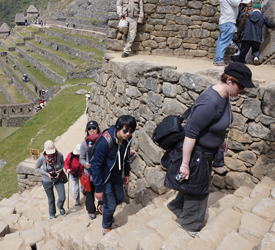 |
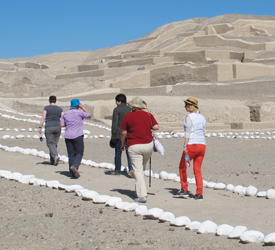 |
| Alumna Tina Cheng and son Kevin Wang, spent hours climbing stairs and terraces. | Wandering around the lunar landscape of Cahuachi, the group discovered the Nazca revered this ceremonial centre for more than 500 years. |
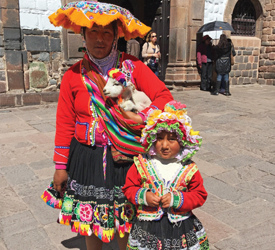 |
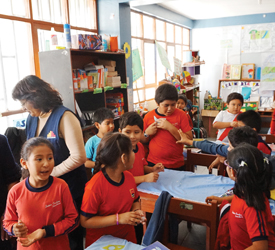 |
| Even billy goats get tricked out for tourists in the heart of Cusco. | Acting spontaneously, the travel study group popped into a school off the Panamericana Highway. |
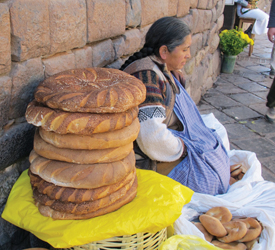 |
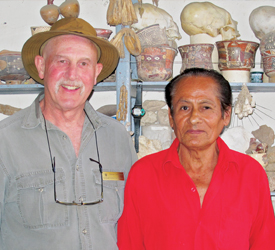 |
| A typical street scene in Cusco. Notice not only the fresh bread but the exquisite masonry work of the Inca walls, built with rocks that could weigh up to 200 tons and could take 1,000 men to move them. | In the town of Nazca, Patrick Carmichael organized a special workshop with master potter Alberto Segura, who shared his secrets on how Nazca pottery was made by the ancients. |
To dive deeply into Inca history, read some of Carmichael’s works at: inca-adventure.com. For more trip information, contact Deb at: [email protected] or call 403-220-4079 or 1-877-220-8509.










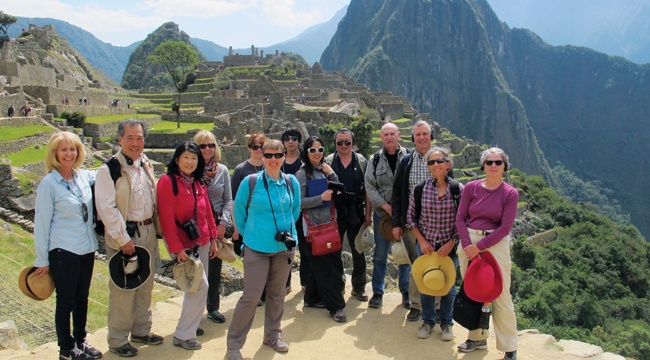 Perched on the lip of UNESCO site, Machu Picchu, the group was able to admire this ancient lost city on three different occasions.
Perched on the lip of UNESCO site, Machu Picchu, the group was able to admire this ancient lost city on three different occasions.